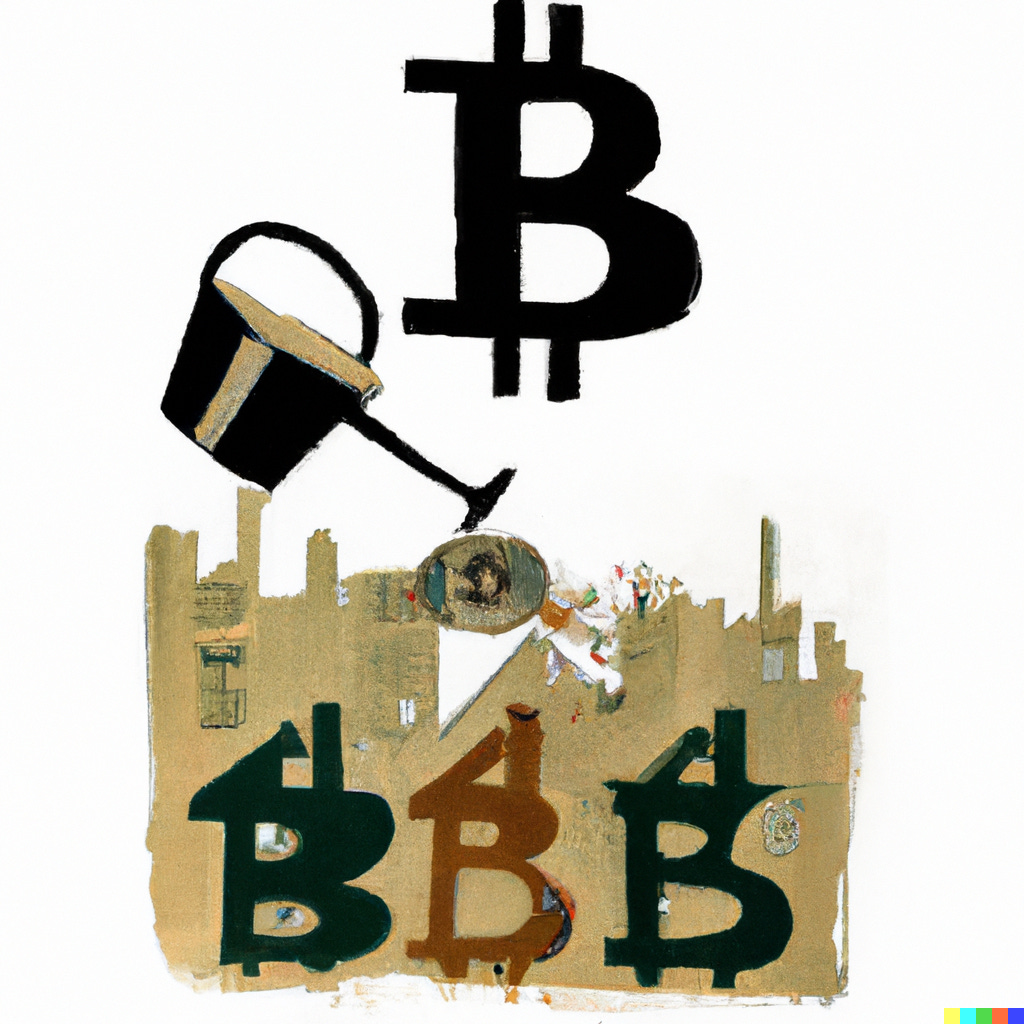Building a Resilient Retirement Portfolio: Embracing Hard Assets and Bitcoin
What worked in the past may not work in the future
Introduction:
In today's uncertain financial landscape, traditional retirement planning strategies may not adequately address the challenges posed by escalating sovereign debt and the rampant money printing. This essay presents an alternative approach to retirement planning that prioritizes hard assets such as gold, silver, commodities, and real estate, with a primary focus on Bitcoin. We will explore various investment options within these asset classes and discuss different retirement vehicles like Roth IRAs, IRAs, 401(k)s, and taxable accounts. By diversifying into sound money and hard assets, individuals can position themselves for long-term financial stability and growth.
Investments:
Bitcoin: Bitcoin has emerged as a robust decentralized digital currency with unique properties that make it an attractive investment for retirement planning. It operates on a secure blockchain network, providing transparency and immutability. Bitcoin's scarcity is guaranteed by its limited supply, ensuring protection against inflation. By allocating a portion of your portfolio to Bitcoin, you can potentially benefit from its price appreciation over time. You may also be interested in a past post I wrote on the Bitcoin Retirement Plan here:
Bitcoin Retirement Plan
·About a year ago, I wrote a piece on the Bitcoin Retirement Plan. Since that time, I have reflected on that initial thought process and refined the approach, while adapting my own retirement planning to these basic steps. I enjoy the simplicity of the approach and not having to be an “investment expert” with my retirement portfolio anymore, by saving …
Investment Options:
a. Direct Ownership (Preferred): Purchasing and holding Bitcoin directly in a digital wallet allows for complete control over your investment. It enables you to participate in the growth potential of Bitcoin while retaining full ownership.
b. Bitcoin Miners: Investing in Bitcoin mining companies or mining equipment manufacturers provides exposure to Bitcoin's value appreciation. As mining activity supports the network's security and issuance, these investments can be indirectly tied to Bitcoin's success.
c. Bitcoin-focused Stocks: Some companies offer exposure to Bitcoin through their business operations, such as payment processors, digital asset management firms or companies like MicroStrategy that hold large amounts of Bitcoin on their balance sheet. These stocks can provide a means to participate in Bitcoin's growth while having some exposure to the broader stock market.
Gold and Silver: Precious metals like gold and silver have served as stores of value throughout history. They provide a hedge against inflation and currency debasement, making them attractive retirement assets.
Investment Options:
a. Physical Ownership (Preferred): Owning physical gold and silver in the form of coins, bars, or bullion offers a tangible asset that can be securely stored. This provides a sense of ownership and stability during times of economic uncertainty. One downside of physical gold and silver ownership is if you have a large amount, you probably don’t want to store it at your house. Storage fees, transportation costs and insurance with a reputable vaulting service can get expensive. This is one of the reasons why I prefer Bitcoin, which costs a modest amount to move on chain, and you incur no storage or insurance costs when you self-custody.
b. Gold and Silver Exchange-Traded Funds (ETFs): Investing in ETFs that track the price of gold and silver allows for easy diversification and liquidity. These funds are backed by physical metal holdings, but you have to research them carefully - the best ETF’s will allow you to take physical delivery of gold or silver in exchange for your shares, if desired.
c. Mining Companies: Investing in mining companies involved in gold and silver extraction can provide exposure to these metals' price movements. These companies' success is tied to the profitability of mining operations. This is a bit riskier way to play gold and silver, as you are facing unique company business risks along with the price of the underlying commodity. They are also quite volatile, as the stock price tends to move much faster up (and down) vis a vis the price of gold, which is why these are often described as a “leveraged” way to invest in gold/silver.
Commodities: Including commodities in a retirement portfolio offers diversification and potential protection against inflation. Commodities like oil, natural gas, agricultural products, and industrial metals have intrinsic value and can act as a hedge against inflation. Geopolitical pressures, global growth and lack of investment in production help to make the case for owning some commodity exposure.
Investment Options:
a. Commodity Stocks (Preferred): Investing in companies involved in commodity production (such as oil and gas companies, mining companies, royalty companies, etc.) can provide exposure to these metals' price movements. This is a very simple and straightforward way to get exposure to commodities, although you are exposed to company-specific operating risks. Most of these companies pay a generous dividend yield, which is a distinct advantage.
b. Commodity ETFs: Exchange-Traded Funds focused on commodities provide broad exposure to various commodities, including oil, natural gas, agriculture, and metals. These ETFs offer ease of trading and diversification within the commodity sector. While stock ETF’s can provide you with some advantages in terms of diversification of company risks and are relatively straightforward, ETF’s that use futures contracts (described below) come with their own unique risks and add a degree of complexity.
c. Commodity Futures Contracts: Investing in futures contracts allows individuals to participate directly in the price movements of specific commodities. However, futures trading carries higher risk and requires expertise in commodity markets. Personally, this is one I would rather leave to the “professionals.”
Real Estate: Real estate investments have long been a staple of retirement planning due to their potential for income generation, appreciation, and diversification.
Investment Options:
a. Rental Properties: Investing in rental properties can provide a consistent stream of income during retirement. Properties in desirable locations with strong rental demand offer the potential for long-term appreciation. Owning rental properties requires a lot of capital up-front to purchase and also to maintain your properties. The tax benefits (depreciation) are nice while you own the property, but if you sell, the tax bill can be massive unless you do a 1031 exchange into a replacement property, which allows you to defer the tax bill to later. This has its own set of challenges and very specific rules you have to follow to avoid getting hit with taxes. You also have to deal with the “Three T’s” of being a landlord: Tenants, Taxes and Toilets.
b. Real Estate Investment Trusts (REITs) (Preferred): REITs allow individuals to invest in a diversified portfolio of income-generating properties without the need for direct ownership or the Three T’s. These publicly traded trusts offer liquidity and dividend income. However, since these trade on the stock market they are susceptible to stock market crashes.
c. Real Estate Crowdfunding: Platforms that facilitate real estate crowdfunding allow individuals to invest in specific real estate projects, such as residential or commercial developments, through smaller investments. This approach provides diversification and accessibility, but can be a bit more risky as many of these platforms are relatively new and unproven. Recently, a mortgage crowdfunding platform PeerStreet filed for bankruptcy protection.
Retirement Vehicle Options:
Roth IRA: A Roth IRA offers tax-free growth potential, as contributions are made with after-tax dollars. Qualified withdrawals during retirement are also tax-free, making it an attractive option for Bitcoin and other investments that may experience substantial appreciation.
Traditional IRA: Contributions to a traditional IRA are made with pre-tax dollars, providing potential tax deductions in the contribution year. However, withdrawals during retirement are subject to income tax, which can impact the overall tax efficiency of Bitcoin investments. In some cases, Bitcoin’s volatility can work in your favor with converting your traditional IRA to a Roth. In my case, I bought in a traditional Bitcoin IRA close to the top of the last cycle and when the price dropped 50% or so in the bear market, I did the Roth conversion, with a relatively modest tax bill and can now look forward to tax-free growth from here on out.
401(k) or Employer-Sponsored Plans: Many employer-sponsored retirement plans, such as 401(k)s, allow individuals to allocate a portion of their contributions to various investment options. Some plans offer limited exposure to alternative assets, including gold or real estate investment trusts. Mine doesn’t, so that’s not an option for me. You might be interested in a conversation I had with Chat GPT about 401(k) plans in this post:
A Conversation With Chat GPT About 401(k) Plans
·I’m not a huge fan of 401(k) plans. My own experience with these over the years is that they: Have complex tax rules that if you don’t follow can cost you a lot of money in penalties (also Congress can change the rules anytime they want, especially if they need to raise more taxes)
Taxable Accounts: Non-retirement taxable accounts provide flexibility in investment choices and liquidity. They can be useful for allocating funds to Bitcoin and other assets outside the constraints of retirement-specific accounts, which have many rules and are always subject to the whims of legislators looking to raise taxes. However, gains in taxable accounts are subject to capital gains tax. Alternatively, if your account is of sufficient size and your cost of living is modest, you might be able to simply borrow against your portfolio to fund your retirement (tax free). The loan would have to be paid back eventually and something would have to be sold, but the timing of that can be flexible. Alternatively, proceeds from a life insurance policy that are tax free to the beneficiary (a trust or estate) could be used to pay off the loan to avoid having to sell any assets.
Summary:
Retirement planning in today's financial landscape requires a shift towards sound money and hard assets. Bitcoin, with its decentralized nature and limited supply, offers a hedge against inflation and potential price appreciation and should be at the core of a hard money approach to retirement savings. Additionally, investments in gold, silver, commodities, and real estate can provide further diversification and protection against inflationary pressures. It is crucial to consider a variety of investment options, including direct ownership, stocks, ETFs, and real estate investment vehicles, to tailor a retirement portfolio that aligns with individual goals and risk tolerance. By acting now and embracing these hard assets, individuals can position themselves for long-term financial stability and growth in an environment marked by escalating sovereign debt and continued money printing.
Not financial or legal advice, for entertainment only, do your own homework. I hope you find this post useful as you chart your personal financial course and Build a Bitcoin Fortress in 2023. To see all my books on investing and leadership, click here.
Always remember: freedom, health and positivity!
Please also check out my Building a Financial Fortress Podcast on YouTube here and on all your favorite streaming platforms. I do a weekly Bitcoin news update every week on current items of interest to the Bitcoin community, usually 30 to 60 minutes depending on the number of topics to cover. Please check it out if you haven’t already. Also now on Fountain, where you can earn Bitcoin just for listening to your favorite podcasts.
If you’re looking for more great Bitcoin signal, check out friend of the show Pleb Underground here.
Lightning tips appreciated:








Yes, yes, yes, and yes. Firmly agree. Nice piece.